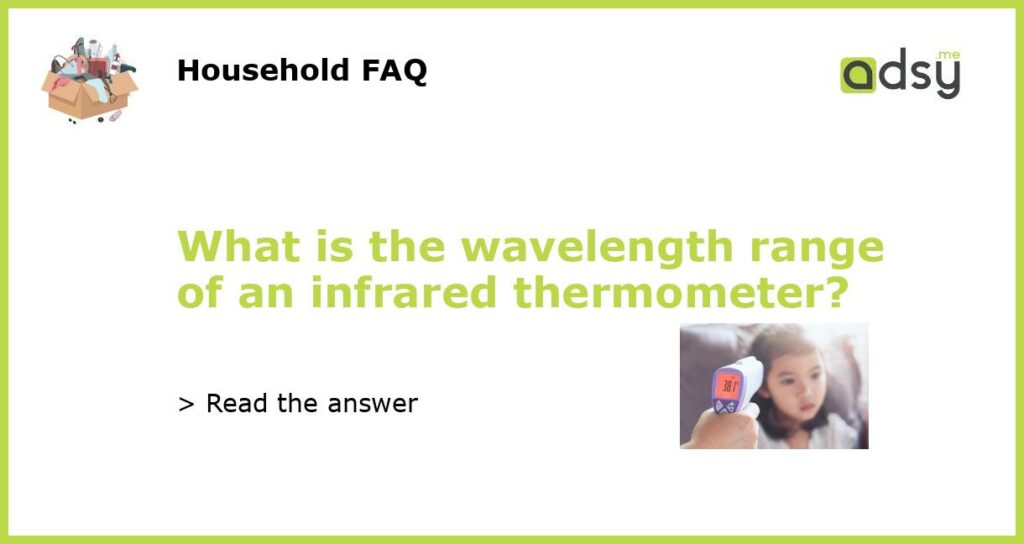The Basics of Infrared Thermometers
An infrared thermometer is a non-contact temperature measurement device that detects infrared energy or thermal radiation emitted by an object. The thermometer senses the radiation and converts it into an electrical signal, which is then displayed as a temperature reading on the device’s screen.
The Wavelength Range of an Infrared Thermometer
The wavelength range of an infrared thermometer typically falls between 5 and 14 microns. This range is commonly referred to as the mid-wave infrared (MWIR) range. Some thermometers have a broader wavelength range and can measure temperatures in the long-wave infrared (LWIR) range of 8-14 microns.
The Importance of Wavelength Range in Infrared Thermometers
The wavelength range of an infrared thermometer is essential because it determines the types of objects it can measure accurately. Different materials and surfaces emit different levels of radiation and have varying emissivity values, which affect the accuracy of the temperature reading. In general, objects with high emissivity values, such as black bodies, are more accurately measured than those with low emissivity values, such as shiny or reflective objects.
Infrared thermometers are widely used in various industries, including food processing, automotive, HVAC, and medical industries. In the food processing industry, they are used to monitor temperature during cooking, cooling, and storage of food products. Automotive technicians use infrared thermometers to diagnose engine and system problems, while contractors in the HVAC industry use them to identify insulation and HVAC problems. Medical professionals use infrared thermometers to measure body temperature and diagnose illnesses.
Several factors can affect the accuracy of infrared thermometers. The distance of the object being measured, the emissivity value of the material, and any obstruction or interference in the line of sight can all affect the reading. It is essential to follow the manufacturer’s guidelines for proper usage and calibration to ensure accurate temperature readings.






